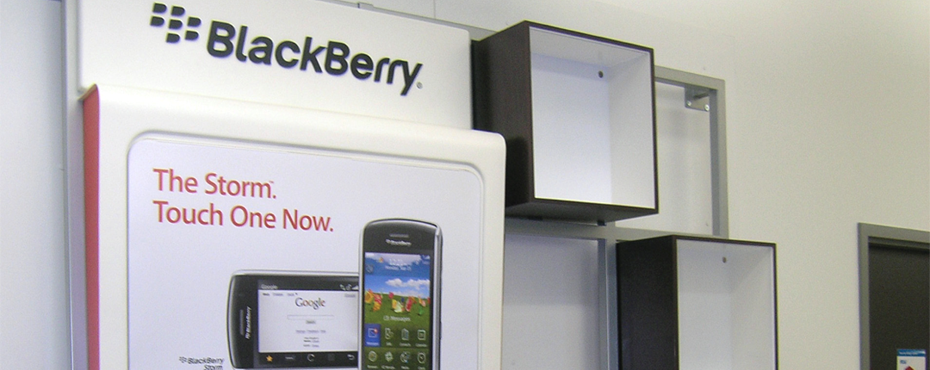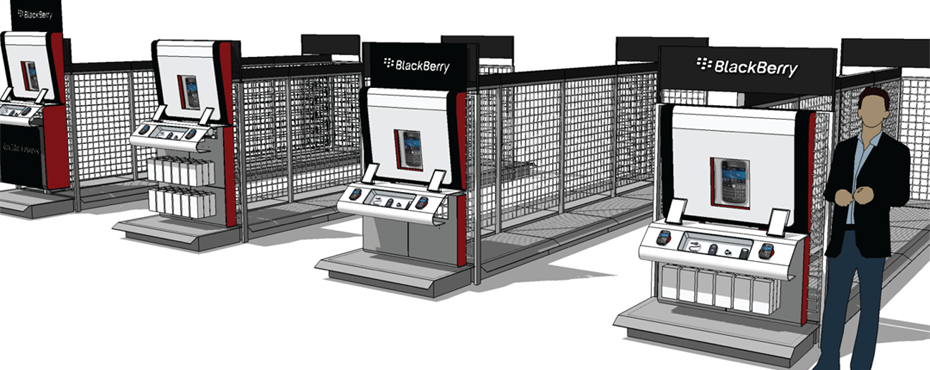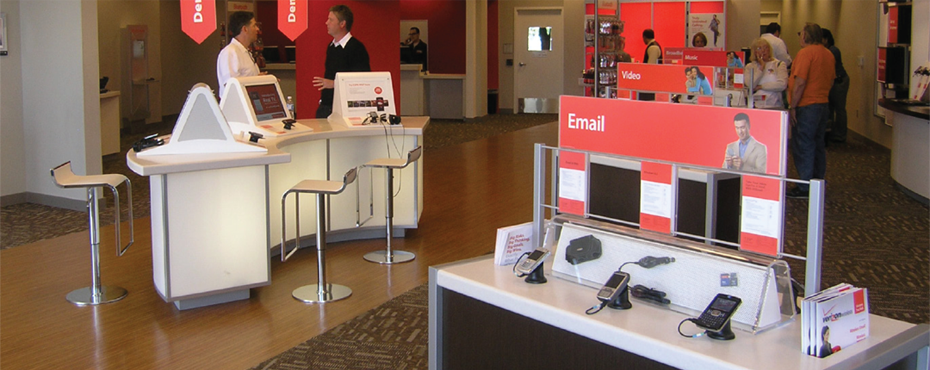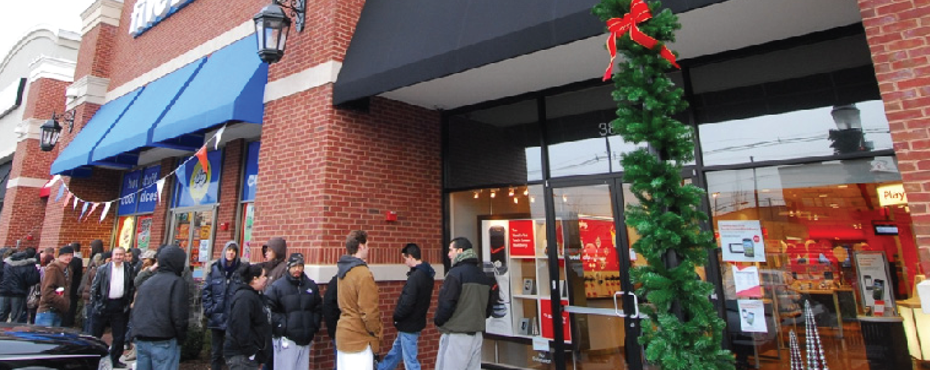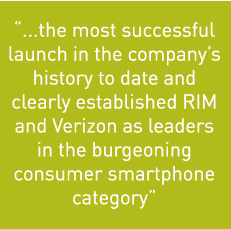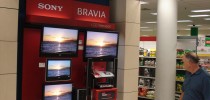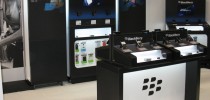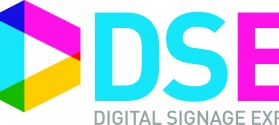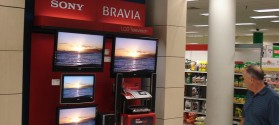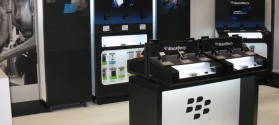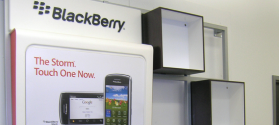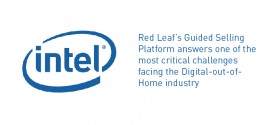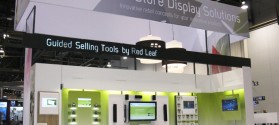Red Leaf Launches New Smartphone at 1,600 Verizon Stores
The smartphone market has emerged as one of the most exciting – and competitive – sectors of the consumer electronics industry, with market leaders introducing innovative new products every few months.
As one of the pioneers of the smartphone market, Research In Motion (RIM) launched its revolutionary new BlackBerry Storm product in mid-November 2009 with its partner Verizon to address the growing consumer segment and respond to AT&T’s iPhone campaign. RIM built its business and its leadership reputation based on the enterprise market.
To properly launch the BlackBerry Storm – the company’s first true foray into the ultra-competitive consumer market – RIM launched an unprecedented global marketing campaign. A key component of the launch was in-store merchandising to support Verizon, the first North American carrier authorized to sell the new product. With 1600 company-owned stores in the United States, Verizon was uniquely positioned to successfully introduce the BlackBerry Storm to an eager marketplace during the all-important holiday buying season.
“Well-executed retail merchandising programs have been proven to attract consumers and help sales representatives demonstrate and educate consumers about key product features and benefits,” says Christopher Potter, Red Leaf President. “RIM wanted to develop a focal point for the BlackBerry brand in-store; Verizon needed a dependable supplier who understood process, had a track record of implementing complex programs, and could meet a tight timeline.”
RIM contacted Red Leaf Retail early in 2008 to begin developing a comprehensive consumer retail display strategy for its entire product line. During the summer of 2009, Verizon was included in discussions for development of a dedicated BlackBerry Storm display, and the project details were finalized in September, leaving less than two months for Red Leaf to design, manufacture and ship 1665 units (including extras for new store openings). Fortunately, the importance and visibility of this product for both RIM and Verizon required quick decisions from all parties at every stage of the process, ensuring smooth product development in spite of the extremely compacted timeline.
The first stage of the process was product design. Potter explains, “we had to meet several key criteria with this project, the most important of which was to create a design aesthetic that successfully combined the two brands, allowing RIM to establish itself within Verizon’s existing environment. We wanted to create a premium brand destination point with soft, organic forms that provided a clean presentation of the product.” It also had to be durable to withstand thousands of consumer interactions and flexible to accommodate new product introductions, yet still be light and cost effective for mass production and shipping.
All units were manufactured on-time and on-budget and shipped to Verizon locations weeks in advance of the launch date. Verizon store employees were required to install the unit in their stores at the close of business on November 20 to be ready for consumers the following day – Black Friday. To assist employees with this task, both Red Leaf and Verizon provided extensive installation support materials, including printed manuals, powerpoint presentations, videos and a 24-hour hotline. Fortunately, the program rolled out without incident, with 0.5 percent deficiency over 1600 locations.
Most importantly, the BlackBerry Storm was an instant hit with consumers; most Verizon locations were out of stock within hours of opening their doors and RIM filled back orders for several weeks after the initial launch date. It was the most successful launch in the company’s history to date and clearly established RIM and Verizon as leaders in the burgeoning consumer smartphone category.
